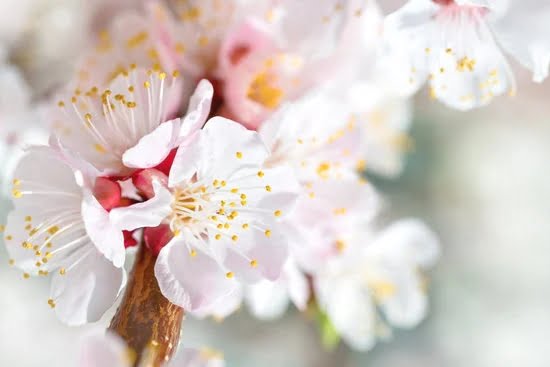Are you looking for fresh ideas for borders in gardens? The design of garden borders is an essential aspect of creating a beautiful and well-structured outdoor space. In this article, we will explore a variety of creative and practical border ideas to help you enhance the aesthetic appeal and functionality of your garden. From traditional plant and flower borders to low-maintenance options and innovative designs, there’s something for every type of gardener to discover.
When it comes to garden design, borders play a crucial role in defining the overall layout and adding visual interest to the landscape. Whether you have a spacious backyard or a small urban garden, carefully planned borders can make a significant impact on the look and feel of your outdoor space. By incorporating diverse plants, flowers, and edibles into your garden borders, you can create a dynamic and visually appealing environment that changes with the seasons.
Throughout this article, we will delve into various border ideas designed to inspire both novice and experienced gardeners alike. From classic plant combinations to unconventional and creative designs, there are endless possibilities when it comes to enhancing your garden with beautiful borders. So get ready to explore a range of exciting new ideas that will bring your garden to life.
Traditional Border Ideas
When it comes to traditional border ideas for gardens, classic plant and flower borders never go out of style. These timeless designs add charm, color, and structure to any garden, creating a visually appealing and cohesive look. Here are some classic plant and flower border ideas to consider for your own garden:
- Roses: A classic choice for borders, roses come in a variety of colors and can be used to create a stunning and fragrant border for your garden.
- Lavender: With its beautiful purple blooms and soothing fragrance, lavender makes an excellent choice for a traditional border. Plus, it’s also loved by bees.
- Boxwood: For a more formal look, consider using boxwood to create neat hedges as borders. This evergreen shrub is easy to maintain and provides year-round interest.
In addition to these classic choices, you can also incorporate other perennial flowers such as peonies, daisies, and delphiniums to create a timeless and colorful border that will delight you year after year.
For those looking for a more formal design, consider planting symmetrical rows of plants or flowers along the edge of your garden beds. This creates a sense of order and structure while still allowing plenty of room for creativity in choosing the specific plants and flowers to include.
Whether you have a large or small garden space, traditional plant and flower borders can add beauty and charm to your outdoor oasis. Consider experimenting with different combinations of plants and flowers to create the perfect border that suits your personal style and complements the overall design of your garden.
Edible Border Ideas
When it comes to garden borders, there are countless possibilities to explore. One creative option to consider is incorporating edible plants and herbs into the design. This not only adds a practical element to your garden but also enhances its visual appeal. Here are some ideas for creating edible borders in your garden:
- Herb Garden Border: Planting a border of various herbs such as basil, thyme, rosemary, and mint can add a delightful aroma and provide easy access to fresh herbs for cooking.
- Vegetable Border: Create a border using a mix of colorful vegetables like Swiss chard, kale, and rainbow carrots. This not only adds visual interest but also provides a convenient way to harvest fresh produce.
- Fruit Tree Border: If space allows, planting a border of fruit trees such as dwarf apple or pear trees can create a beautiful and functional garden feature. These trees can also provide shade and a source of delicious fruits.
In addition to their visual appeal, edible borders offer the practical benefit of providing fresh ingredients for cooking right outside your door. Additionally, these borders can be an excellent way to maximize space in smaller gardens by incorporating both ornamental and edible elements.
Exploring ideas for borders in gardens that incorporate edible plants and herbs opens up a world of possibilities for both experienced and novice gardeners. Whether you have a spacious backyard or a small urban plot, there are numerous creative ways to integrate edible elements into your garden design while adding aesthetic value at the same time.
Low-Maintenance Border Ideas
When it comes to creating a beautiful garden, not all of us have the time or energy to dedicate to high-maintenance borders. Luckily, there are plenty of low-maintenance border ideas that can still make a big impact in your garden design. From durable and easy-to-care-for plants to strategic design choices, there are many ways to achieve a stunning border without the added stress of constant upkeep.
Durable Perennials and Shrubs
One of the easiest ways to create a low-maintenance border is by filling it with durable perennials and shrubs. These types of plants require minimal care and attention, making them perfect for busy gardeners. Look for hardy varieties that can withstand different weather conditions and thrive with little intervention. Some popular options include lavender, ornamental grasses, coneflowers, and yarrow.
Mulching and Weed Control
To keep your border looking tidy and neat without spending hours on maintenance, consider using mulch as a natural weed barrier. A layer of mulch not only helps to suppress weed growth but also retains moisture in the soil, reducing the need for frequent watering. Choose organic mulch such as wood chips or bark nuggets for a more natural look that complements your garden’s aesthetic.
Smart Design Choices
Incorporate low-maintenance design elements into your border layout to minimize upkeep. For example, opt for clean lines and symmetrical patterns that are visually appealing without requiring much maintenance. Utilize evergreen plants strategically to maintain year-round structure and interest in your border without the need for seasonal replanting or trimming.
By implementing these low-maintenance border ideas, you can enjoy a beautiful and well-kept garden without the added pressure of constant upkeep. Whether you’re a beginner gardener or simply short on time, these practical solutions will help you create a stunning border that enhances the overall look of your outdoor space.
Perennial Border Ideas
Perennial plants are a great addition to any garden, as they come back year after year and require minimal effort to maintain. When it comes to border ideas for gardens, perennial plants can make beautiful and long-lasting borders that add color, texture, and interest to the landscape. Here are some ideas for using perennial plants to create stunning borders in your garden.
Choosing Perennial Plants
When selecting perennial plants for your garden borders, it’s important to consider factors such as sunlight requirements, soil conditions, and the overall aesthetic you want to achieve. Some popular choices for perennial border plants include coneflowers, lavender, black-eyed susans, and ornamental grasses. These plants come in a variety of colors and heights, allowing you to create a diverse and visually appealing border.
Mixing Perennials With Annuals
To create dynamic and ever-changing borders in your garden, consider mixing perennial plants with annuals. Annual flowers provide bursts of color throughout the growing season and can complement the long-lasting nature of perennials. This combination allows you to experiment with different color schemes and plant combinations each year, keeping your garden borders fresh and exciting.
Creating Cohesive Borders
As you plan your perennial borders, think about creating cohesion through repetition of certain plant varieties or colors. By repeating key elements along the border, you can establish a sense of rhythm and flow that ties the entire garden together. Additionally, layering plants by height can add depth and visual interest to the border design. Consider placing taller perennials towards the back of the border and shorter ones towards the front to create a sense of depth.
Incorporating perennial plants into garden borders offers a sustainable and low-maintenance way to enhance your outdoor space. With careful planning and consideration of various plant options, you can create stunning borders that bring beauty and longevity to your garden design. Whether you prefer a cottage-like feel or a more contemporary look, there are countless ways to use perennial plants effectively in your garden borders.
Seasonal Border Ideas
When planning the layout of a garden, one way to keep it looking fresh and interesting throughout the year is to incorporate border designs that change with the seasons. This can be achieved by selecting plants that offer different colors, textures, and blooms at different times of the year. By carefully considering which plants to include in a seasonal border, gardeners can create a dynamic and ever-changing landscape that remains visually appealing regardless of the season.
For spring, consider incorporating early-blooming bulbs such as daffodils and tulips into the border. These colorful flowers will add vibrancy to the garden after a long winter. As summer approaches, transitioning to plants like daylilies, asters, and coneflowers will ensure that the border remains full of life and color. For autumn, ornamental grasses, sedum, and autumn crocus can bring a burst of warm hues before winter sets in.
In addition to flowers, incorporating foliage plants with varying colors and textures can also help create interest in a seasonal border. Shrubs like barberry or ninebark provide beautiful foliage that changes color throughout the year. Ornamental grasses are another great option for adding movement and texture to a border.
When designing borders that change with the seasons, it’s important to consider not just the bloom times of plants but also their overall shape and form. Mixing tall, spiky plants with low-growing spreading ones can help create depth and visual interest in the garden year-round.
| Season | Plant Suggestions |
|---|---|
| Spring | Daffodils, Tulips |
| Summer | Daylilies, Asters, Coneflowers |
| Autumn | Ornamental Grasses, Sedum, Autumn Crocus |
Border Ideas for Small Gardens
When planning a garden in a limited space, it’s important to make the most of every inch. Borders are a great way to define and add interest to small gardens. Luckily, there are plenty of creative and space-saving ideas for borders in gardens that can help maximize the potential of a compact outdoor area.
One idea for small garden borders is to use vertical elements such as trellises, arbors, or tall planters. These features not only add height and visual interest to the garden but also create boundaries without taking up valuable floor space. Climbing plants like clematis, jasmine, or ivy can be trained to grow on these structures, adding a lush green backdrop to the garden.
Another space-saving border idea is to create a multi-functional border by planting herbs or vegetables alongside decorative plants. This not only saves space but also provides a practical purpose by allowing homeowners to grow their own fresh produce within the confines of their garden borders.
Consider creating a “living wall” as part of the border design for a small garden. Vertical gardens are an innovative way to maximize space while adding texture and color. Using specially designed containers or planting panels, homeowners can grow a variety of plants in a vertical arrangement, turning an otherwise plain boundary into a beautiful living work of art.
| Border Idea | Description |
|---|---|
| Vertical Borders | Use trellises, arbors, or tall planters for added height and visual interest without taking up floor space. |
| Multi-Functional Borders | Create borders that include both decorative plants and edible herbs or vegetables for practicality and beauty. |
| Living Walls | Create vertical gardens with specially designed containers or planting panels for a unique display of plants. |
Creative Border Ideas
When it comes to creating borders in gardens, there are plenty of unique and unconventional ideas that can add a touch of creativity and personality to your outdoor space. One out-of-the-box concept is creating a border with succulents and cacti.
These low-maintenance and water-wise plants come in a variety of shapes and colors, making them an interesting and eye-catching choice for border design. By incorporating succulents and cacti into your garden borders, you can create a modern and drought-tolerant landscape.
Another creative border idea is using elements other than plants to define the edges of your garden beds. Consider incorporating rocks, stones, or even driftwood to create a natural and rustic border. This approach not only adds visual interest but also provides texture and dimension to your garden design. Additionally, using non-traditional materials allows you to personalize your borders based on your taste and style.
For those looking for a whimsical touch in their garden borders, consider incorporating ornamental grasses or even upcycled materials such as colorful bottles or old bicycle wheels. These unexpected elements add an element of surprise and playfulness to the garden while allowing you to express your individuality through your garden design. Thinking outside the box when it comes to border ideas can truly elevate the overall look of your garden while showcasing your creativity and unique sense of style.
By exploring these creative border ideas, you can break away from traditional design concepts and infuse your garden with personality. Whether it’s using non-traditional materials or choosing unique plant species, there are endless opportunities for thinking outside the box when designing borders for gardens. Embracing creativity in garden design not only enhances the visual appeal of the space but also creates an opportunity for self-expression in outdoor landscaping.
Conclusion
In conclusion, the importance of well-planned borders in garden design cannot be overstated. Borders not only add aesthetic appeal to a garden but also serve practical purposes such as defining spaces, controlling weeds, and attracting beneficial insects. Whether it’s traditional plant and flower borders, edible border designs, low-maintenance options, or creative and unconventional ideas, there are countless possibilities to explore when it comes to creating borders in gardens.
As gardeners, we should always be open to trying out new ideas for borders in our gardens. Seasonal border designs can add variety and interest throughout the year, while perennial plants provide long-lasting beauty with minimal maintenance.
For those with limited space in their gardens, small garden border ideas offer space-saving solutions without sacrificing style. And for those looking to think outside the box, there are endless opportunities to get creative and experiment with unique and unconventional border designs.
Incorporating well-planned borders into garden design not only enhances the overall look of the outdoor space but also contributes to a more cohesive and organized landscape. By exploring different ideas for borders in gardens, gardeners can elevate their gardening experience and create beautiful and functional outdoor spaces that they can enjoy for years to come.
Frequently Asked Questions
What Is the Cheapest Way to Do a Edging?
The cheapest way to do edging is to use simple materials like recycled bricks, stones, or even untreated lumber. These can be arranged along the garden border to create a defined edge without breaking the bank.
How Do You Make a Cheap Garden Border?
To make a cheap garden border, consider using materials like old pallets, wine bottles, or even upcycled tin cans. These items can be repurposed and arranged creatively to serve as a cost-effective garden border.
What Can I Border My Garden With?
There are several options to border your garden with, depending on your budget and style. You can use traditional materials such as bricks, stones, or wood for a classic look. Alternatively, you could opt for more creative choices like tires, bottle caps, or shells for a unique and inexpensive border solution.

Welcome to my gardening blog! I am passionate about plants and enjoy sharing my knowledge and experiences with others. In this blog, I will write about everything related to gardening, from tips on how to get started to updates on my own garden projects.





